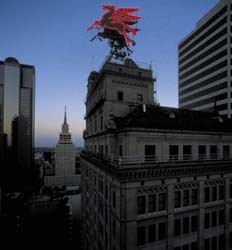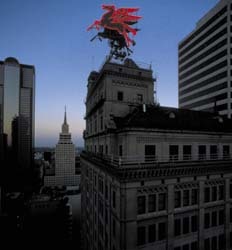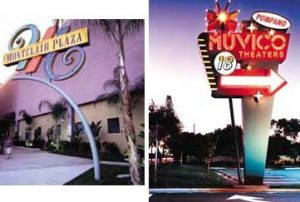No client wants a sign that needs regular service, because it’s expensive. But every electric sign needs maintenance — preferably, fast and reliable. But in many cases, you can hear servicemen shouting, "What dummy built this sign?" (or something similar). During the planning and manufacturing stages, service work is neglected. This month, I’ll discuss foresight in sign planning.
Accessibility and safety
Signs not only must be built correctly, but placed correctly. When a location survey is conducted for a new sign, accessibility for maintenance purposes must also be considered. This includes extra space so ladder trucks can be placed close enough to reach necessary spots; what are now lawns and parking lots may be sites for future buildings.
In certain cases, soft soil will prohibit proper placement of a ladder. A high, pole sign must have at least 20 ft. of paved floor space around the base. Refer to Article 600-9 of the National Electric Code (NEC) regarding free space, mounting height and physical protection requirements.
Also, beware of utility poles’ proximity . For voltages up to 50kV to ground, the Occupational Safety and Health Administration’s (OSHA) code 29CFR1910.33(c)(3)(i) mandates that all personnel (qualified and unqualified) working in an elevated position near overhead lines must not let the longest conductive object he or she handles come closer than 10 ft. to any ungrounded, energized, overhead line. For voltages over 50kV, 10 ft., plus 4 in. for every 10kV over 50kV is required.
Neon and sign electricians count as unqualified personnel, and neon tubes are considered conductive objects; they can become conductive when high voltage is present. I’ve seen arcs going straight through the glass of the tube to ground.
Be sure it’s really off
Before you touch any part of an electric sign — especially one operating on high voltage — switch off the main supply. The marking and indication of a sign’s circuit breaker is the most common reason why signs fail my inspections. Often, someone alters the service panel or changes the panel’s label, thereby erasing the markings.
Article 600-6 of the NEC clearly states that a service disconnect must be in direct sight from the sign or capable of being locked in the open position. The article also requires a separate switch for every branch of the system feeding a sign. Article 600-5(b)2 limits the current load per branch. Consequently, large sign installations (or buildings with more than one sign) may have more than one disconnect switch on the panel.
Always switch off all disconnects for the sign on which you’re working. If you’re not absolutely sure, switch off all disconnects you may associate with the sign. Reaching into an electric sign presumed "off" (neglecting the test if the sign is really de-energized) is the most common cause of electrocution in the sign business.
Researching the unknown object
Unless you built the sign yourself and remember exactly how you did it, opening a sign for maintenance is usually pure guesswork. This can be dangerous, especially if parts have degenerated and aren’t as strong as they appear.
At a recent inspection I conducted, the sign designer didn’t plan for inspection or service, so it was impossible to access neon tubes without breaking them. Most signs are custom engineered and thus unique; therefore, the way to open or disassemble a sign differs from sign to sign.
Why do only the best-constructed signs have markings on the bolts that must be removed for opening? Usually, you have to guess the right ones and loosen parts inside. Then you can’t fasten them later if you’ve removed the wrong ones.
With a service-opening lid (avoided by designers, as it will add a "technical touch" to the sign), no guesswork is involved. But service openings are too small for complete access. Imagine having to change a transformer inside and reconnect the high-voltage connections — there’s no way to access the components with both hands.
How can you replace a broken housing? There’s no other way than to remove the whole sign, disassemble it, replace the housing and reinstall it. A hinge-mounted face could have made access much easier.
Records, records, records
If there’s one thing I try to avoid, it’s bureaucracy — and the paperwork involved. However, full documentation or schematics are absolutely essential when repairing a technical item.
But don’t trust the sign owner to have the file handy when you arrive on a service call and ask for the sign’s documentation. More than likely, you’ll have to guess which transformer powers a certain set of neon tubes. During an inspection, the sign electrician who built the sign often can’t discern different circuits.
We didn’t know how lucky we were when radios and televisions included a schematic diagram inside — either glued to the back lid or tucked inside a small plastic bag underneath the circuit board. After servicing the unit, the information was put back in place for the next technician. If it wasn’t properly returned, service people typically called the manufacturer, who’d send this information in a few days, kindly requesting that technicians place it back in the unit after their work was completed.
I don’t understand why we don’t include a parts list, diagram and other documentation in every cabinet before closing it. Also, why doesn’t the sign manufacturer maintain records listing parts, tubes and wiring layouts used to build each sign? Further, why can’t inspectors find a label on the sign that includes the manufacturer’s contact information so they can easily request records?
Investing a few dollars more to properly document construction doesn’t significantly increase the cost of an expensive sign, but it’ll help the client and service personnel. One thing is for certain: Every electric sign needs maintenance, whether it’s incandescent, HID, fluorescent, LED or neon. If you plan for service needs while constructing your signs, your employees won’t get the sign-service blues.



 Tip Sheet1 week ago
Tip Sheet1 week ago
 Photo Gallery2 days ago
Photo Gallery2 days ago
 Ask Signs of the Times4 days ago
Ask Signs of the Times4 days ago
 Real Deal1 week ago
Real Deal1 week ago
 Benchmarks6 days ago
Benchmarks6 days ago
 Women in Signs1 week ago
Women in Signs1 week ago
 Photo Gallery1 week ago
Photo Gallery1 week ago
 Women in Signs1 week ago
Women in Signs1 week ago












